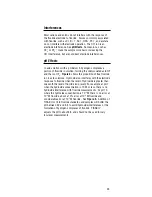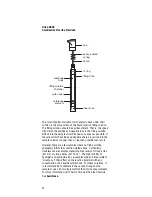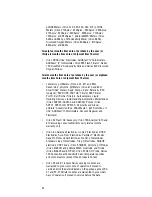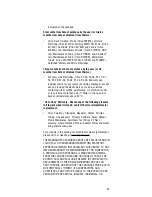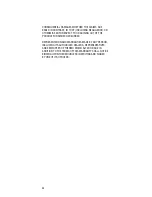
Theory of Operation
The fluoride electrode consists of a sensing element bonded
into an epoxy body. When the sensing element is in contact
with a solution containing fluoride ions, an electrode potential
develops across the sensing element. This potential, which
depends on the level of free fluoride ion in solution, is measured
against a constant reference potential with a digital pH/mV
meter or specific ion meter. The measured potential
corresponding to the level of fluoride ion in solution is
described by the Nernst equation.
E
= E
o
+ S log (A)
where:
E
= measured electrode potential
E
o
= reference potential (a constant)
A
= fluoride ion activity level in solution
S
= electrode slope (about 57 mV per decade)
The level of fluoride ion, A, is the activity or “effective
concentration” of free fluoride ion in solution. The fluoride ion
activity is related to free fluoride ion concentration, C
f
, by the
activity coefficient, y
i
A =
γ
y
C
f
Ionic activity coefficients are variable and largely depend on total
ionic strength. Ionic strength is defined as:
Ionic strength = 1 /2
∑
C
i
Z
i
2
where:
C
i
= concentration of ion i
Z
i
= charge of ion i
and
∑
symbolizes the sum of all the types of ions
in solutions.
If background ionic strength is high and constant relative to the
sensed ion concentration, the activity coefficient is constant and
activity is directly proportional to concentration.
Total ionic strength adjustor buffer (TISAB) is added to all
fluoride standards and samples so that the background ionic
strength is high, fluoride is decomplexed, and the pH of the
solution is adjusted.
38
Summary of Contents for 96-09
Page 7: ...4 ...












